Samsung has always had a thing for superlatives: this time around, the Galaxy Note20 Ultra offers “hyperfast 5G,” “superfast charging,” the “highest-resolution video recording in a smartphone,” and a huge 6.9-inch display with a dynamic 120Hz refresh rate. It is also a note-taking device, a desktop PC, a mini Xbox, and thanks to its IP68 certification, it is even capable of taking pictures underwater.
On the audio side of things, Samsung and AKG renew their vows, promising an improved recording quality with minimized distortions in noisy environments thanks to an AOP microphone; immersive surround sound thanks to the embedded Dolby Atmos technology; and “ultra-high quality audio playback” (regardless of the topic, superlatives are never very far).
Audio specifications include:
- Stereo speakers
- Surround sound with Dolby Atmos technology (Dolby Digital, Dolby Digital Plus included)
- High AOP (Acoustic Overload Point) microphone
- Ultra-high-quality audio playback
- Dual Audio (user can connect two Bluetooth devices to the Galaxy Note20 or Note20 Ultra to play audio through the two devices simultaneously)
About DXOMARK Audio tests: For scoring and analysis in our smartphone audio reviews, DXOMARK engineers perform a variety of objective tests and undertake more than 20 hours of perceptual evaluation under controlled lab conditions. This article highlights the most important results of our testing. Note that we evaluate both Playback and Recording using only the device’s built-in hardware and default apps. (For more details about our Playback protocol, click here; for more details about our Recording protocol, click here.)
Test summary


With an overall score of 68, our DXOMARK Audio testing protocol placed the Samsung Galaxy Note20 Ultra 5G well above average. Standing eight points away from our top-ranking phone so far, namely the Mi 10 Pro, the new Ultra in the Galaxy remains beaten by a sliver by its sibling, the S20 Ultra.
In Playback testing, Samsung’s flagship phablet excels at controlling undesirable artifacts and delivers natural midrange frequencies, sharp attacks, good wideness, and satisfactory maximum volume. On the other hand, a lack of low- and high-end extension impairs the overall tonal balance, and in landscape mode, the left/right balance is shifted to the side of the device. Minimum volume is a little too low, and punch is a slightly lacking at maximum volume.
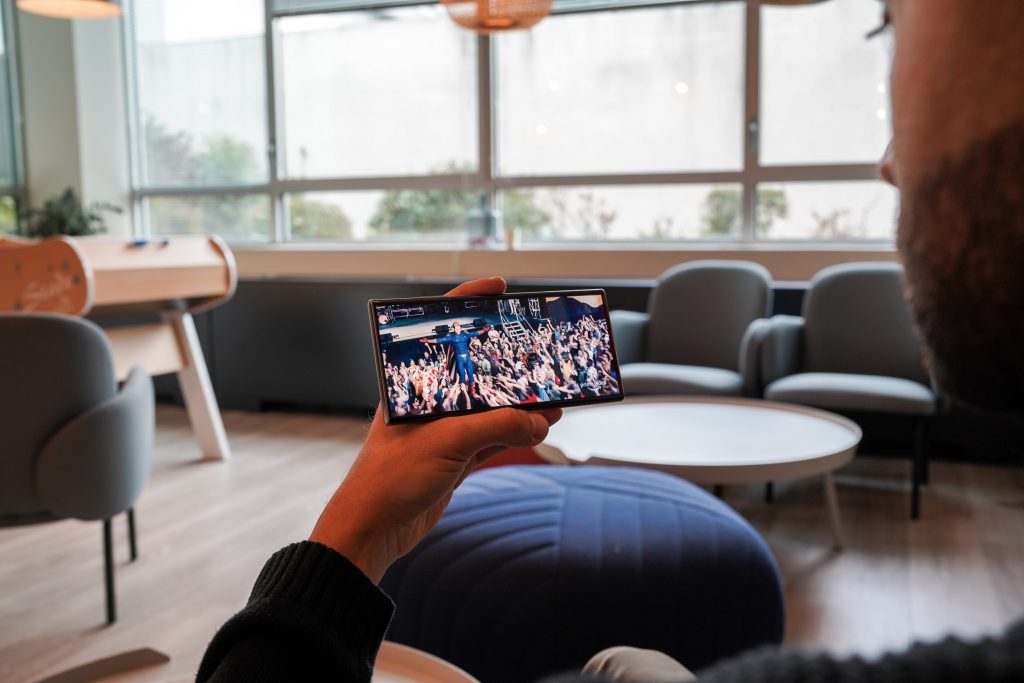
The Galaxy Note20 Ultra’s recordings enjoy very good dynamics, precise high-end frequencies when filming with the rear camera, clear localizability, and realistic distance. Unfortunately, selfie videos are a little overlooked: while they certainly ensure good nominal loudness and very few artifacts, they are impaired by a lack of high-end extension, prominent midrange and high-end resonances which emphasize the background noise, and poor wideness. As for memos, they are exclusively recorded in mono, and are affected by high-end resonances and prominent low-mid frequencies. However, they benefit from good nominal loudness, precise midrange, and no noticeable artifacts. On that last note, however, when recording loud signals, distortion and compression can both be perceived, regardless of the use case.
Sub-scores explained
The DXOMARK Audio overall score of 68 for the Samsung Galaxy Note20 Ultra 5G is derived from its Playback and Recording scores and their respective sub-scores. In this section, we’ll take a closer look at these audio quality sub-scores and explain what they mean for the user.
Playback
Timbre tests measure how well a phone reproduces sound across the audible tonal range and takes into account bass, midrange, treble, tonal balance, and volume dependency.
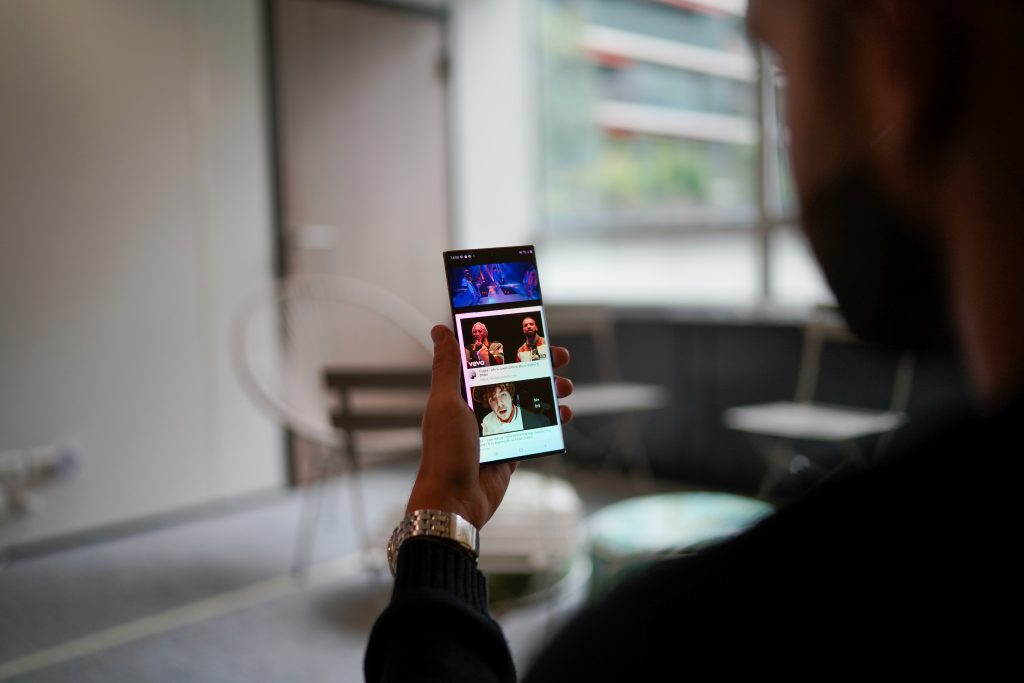
The Samsung Galaxy Note20 Ultra delivers a fairly good timbre performance, with precise midrange frequencies allowing a natural rendering of voices and typical midrange instruments (violin, guitar, flute, and many others). As shown in the graph below, a lack of high-ends impairs the overall tonal balance.
In portrait mode, although the midrange-treble balance is better, there’s a noticeable lack of low-end extension. Bass improves a bit when watching movies, which incidentally seems to be the use case in which every other frequency range performs best.

Dynamics
Samsung Galaxy Note20 Ultra 5G (Exynos)
66
81
DXOMARK’s dynamics tests measure how well a device reproduces the energy level of a sound source, and how precisely it reproduces bass frequencies.
Its dynamics score of 66 places the Note20 Ultra nine points from the best phone we have tested so far in this category, namely the Huawei Mate 20 X, and one point below the S20 Ultra. Although bass precision is impaired by the lack of low-end extension, it delivers a very acceptable performance at nominal and maximum volumes, at which attack is particularly good.
At soft volumes, however, all three dynamics sub-attributes (attack, punch and bass precision) are less satisfactory. At maximum level, heavy compression affects the speaker’s ability to render an efficient punch feel.

Spatial
Samsung Galaxy Note20 Ultra 5G (Exynos)
62
88
The sub-attributes for perceptual spatial tests include localizability, balance, distance, and wideness.

As our brains greatly rely on high frequencies for sound localization, the Galaxy Note20 Ultra’s lack of high-end extension logically results in poor localizability when playing back music, movies, or games through the speakers. Furthermore, the left/right balance is shifted to the right side of the device in landscape mode, and voices tend to be perceived as further away than the screen position. That said, wideness is good, especially when playing games.
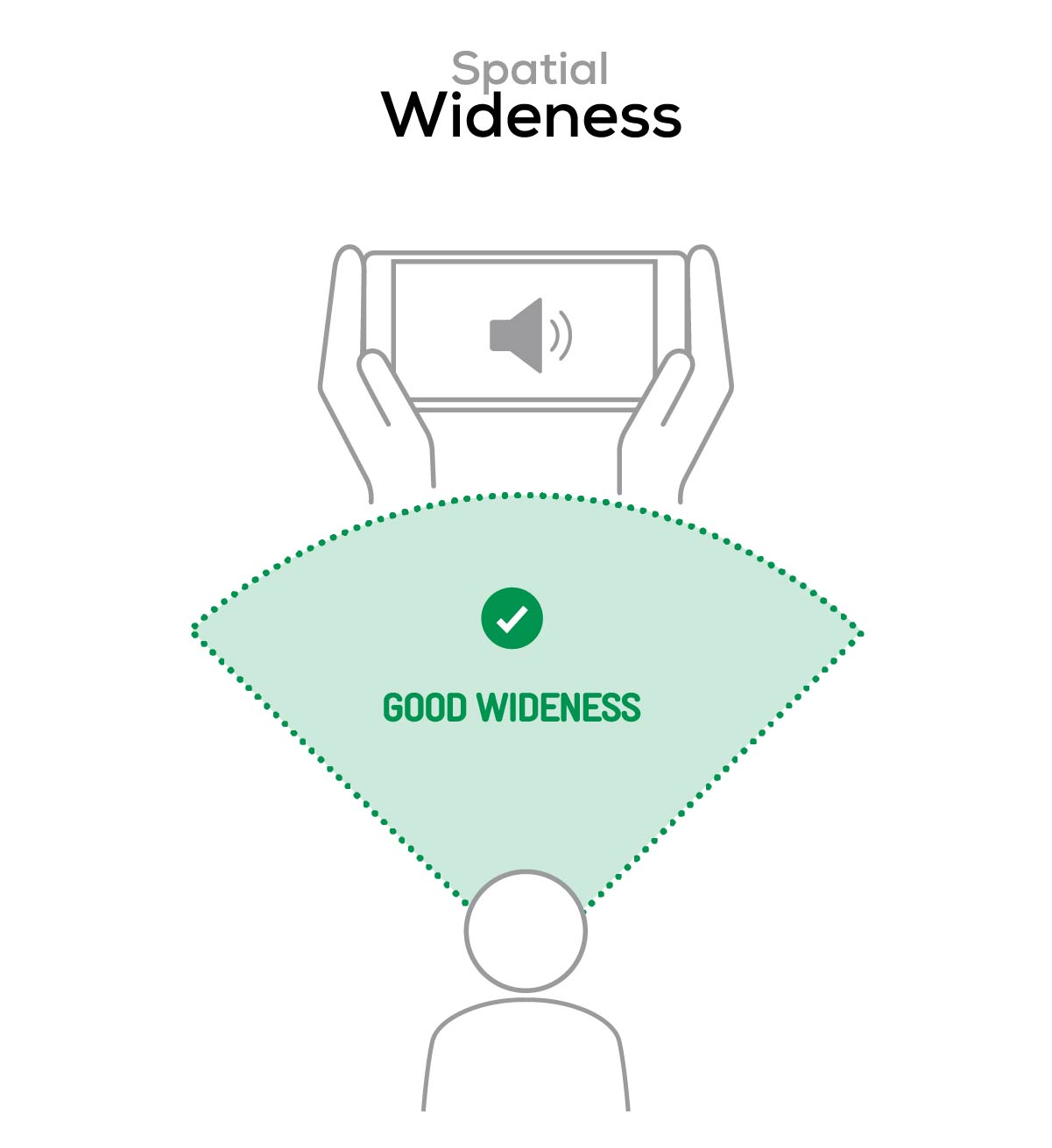
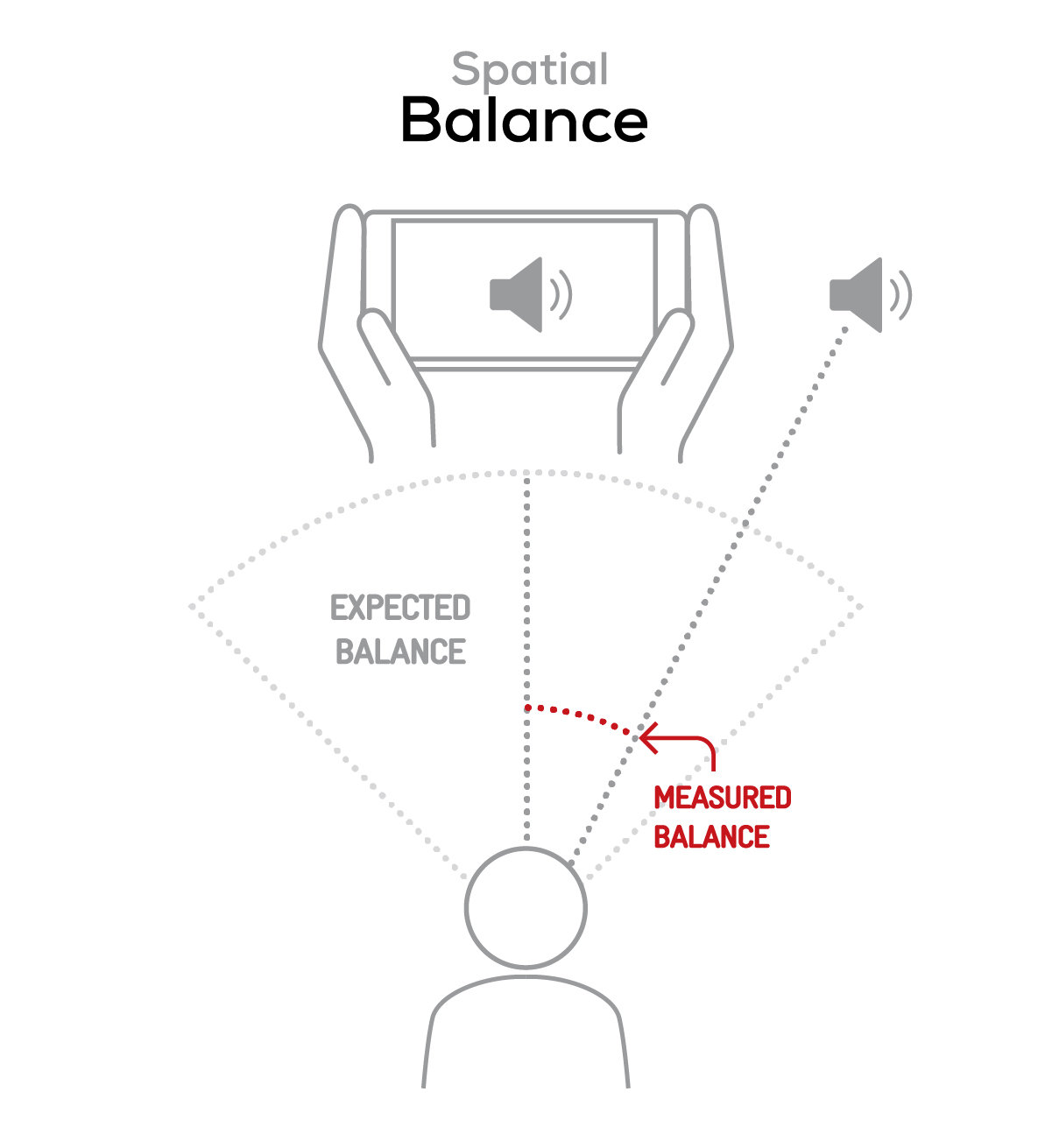

Volume
Samsung Galaxy Note20 Ultra 5G (Exynos)
66
91
Volume tests measure both the overall loudness a device is able to reproduce and how smoothly volume increases and decreases based on user input.
In volume testing, Samsung’s Galaxy Note20 Ultra ensures a rather linear volume increase, as shown in the graph above. While minimum volume is too low (which means dynamic content such as classical music is hardly intelligible), maximum volume is very satisfactory.
| Hip-Hop | Classical |
| 72.6 dBA | 69.9 dBA |

Artifacts
Samsung Galaxy Note20 Ultra 5G (Exynos)
90
113
Artifacts tests measure how much source audio is distorted when played back through a device’s speakers. Distortion can occur both because of sound processing in the device and because of the quality of the speakers.
With a sub-score of 90, the chaebol’s flagship simply crushes every smartphone that underwent our Audio protocol, surpassing the previous title holder, the Black Shark 2 Pro, by two points. No noise and very few artifacts are noticeable, both at nominal and at maximum volume. A few spectral artifacts (such as distortion) are perceived in the low-end of the spectrum at maximum volume, especially when playing games, and the bottom speaker can occasionally be occluded.
Recording

Timbre
Samsung Galaxy Note20 Ultra 5G (Exynos)
76
91
The Galaxy Note20 Ultra’s timbre sub-scores reveal a very contrasted performance, depending on the use case. When recording videos with the rear camera, the phone delivers a good timbre performance, with precise high-ends despite loud background noises.
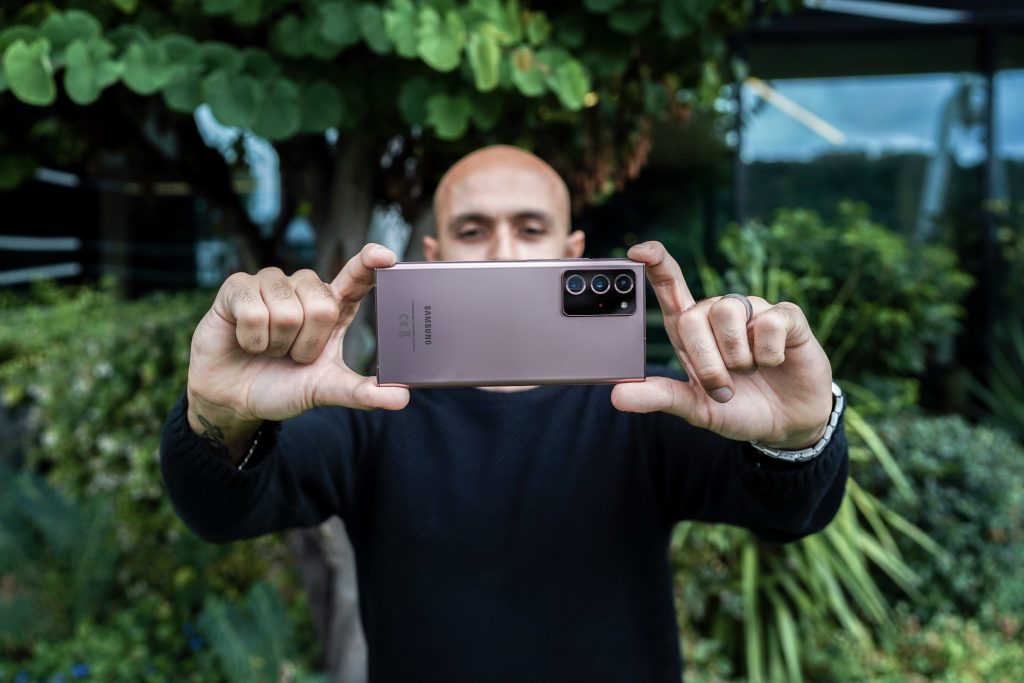
Selfie videos, on the other hand, are affected by a lack of high-end extension and prominent resonances in the midrange frequencies, while memo recordings enjoy precise midrange frequencies, but suffer from high-end resonances.
Finally, recordings made in a loud environment are slightly boomy, but are still perceived as natural. Bass is well rendered, regardless of the use case.

Dynamics
Samsung Galaxy Note20 Ultra 5G (Exynos)
66
81
With a Recording Dynamics sub-score of 66, the Samsung Galaxy Note20 Ultra ranks fairly high in our database. Plosives (“p” and “b” sounds) remain very intelligible due to the microphones’ ability to respect the sound envelope. When recording videos with the rear camera, the signal-to-noise ratio is high, thus allowing subtle sound nuances to express themselves.
When recording selfie videos, resonances in the high-end frequencies emphasize the background noise, which lowers the SNR. In the memo app, prominent low-midrange frequencies impair the plosives’ sharpness. In loud environments, recordings globally lack a bit of punch.

Spatial
Samsung Galaxy Note20 Ultra 5G (Exynos)
60
78
In the spatial area, the Galaxy Note20 Ultra’s Recording performance is diametrically opposite that for Playback. In particular, localizability is excellent in life videos, and distance rendering is particularly realistic, regardless of the use case.
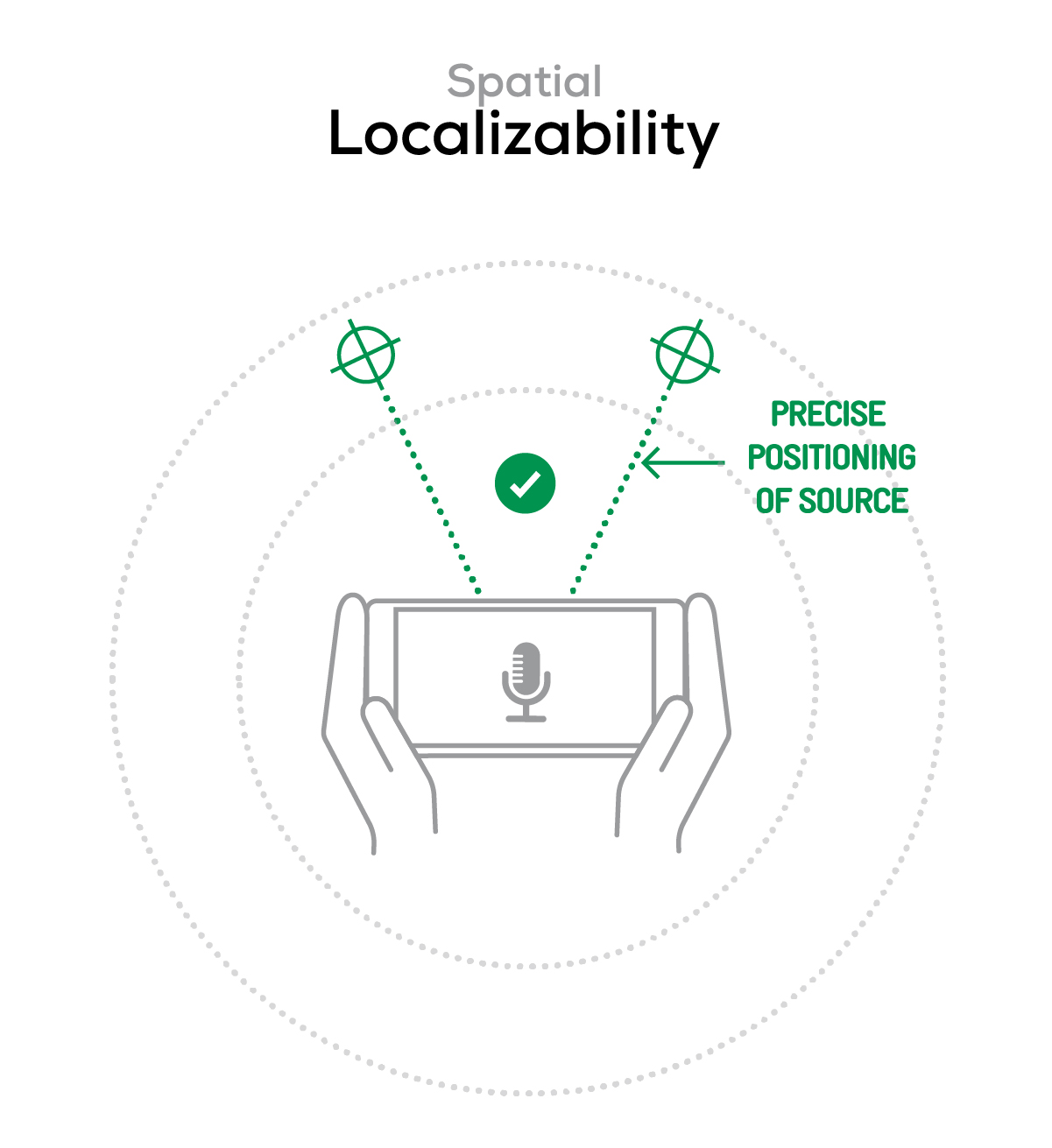
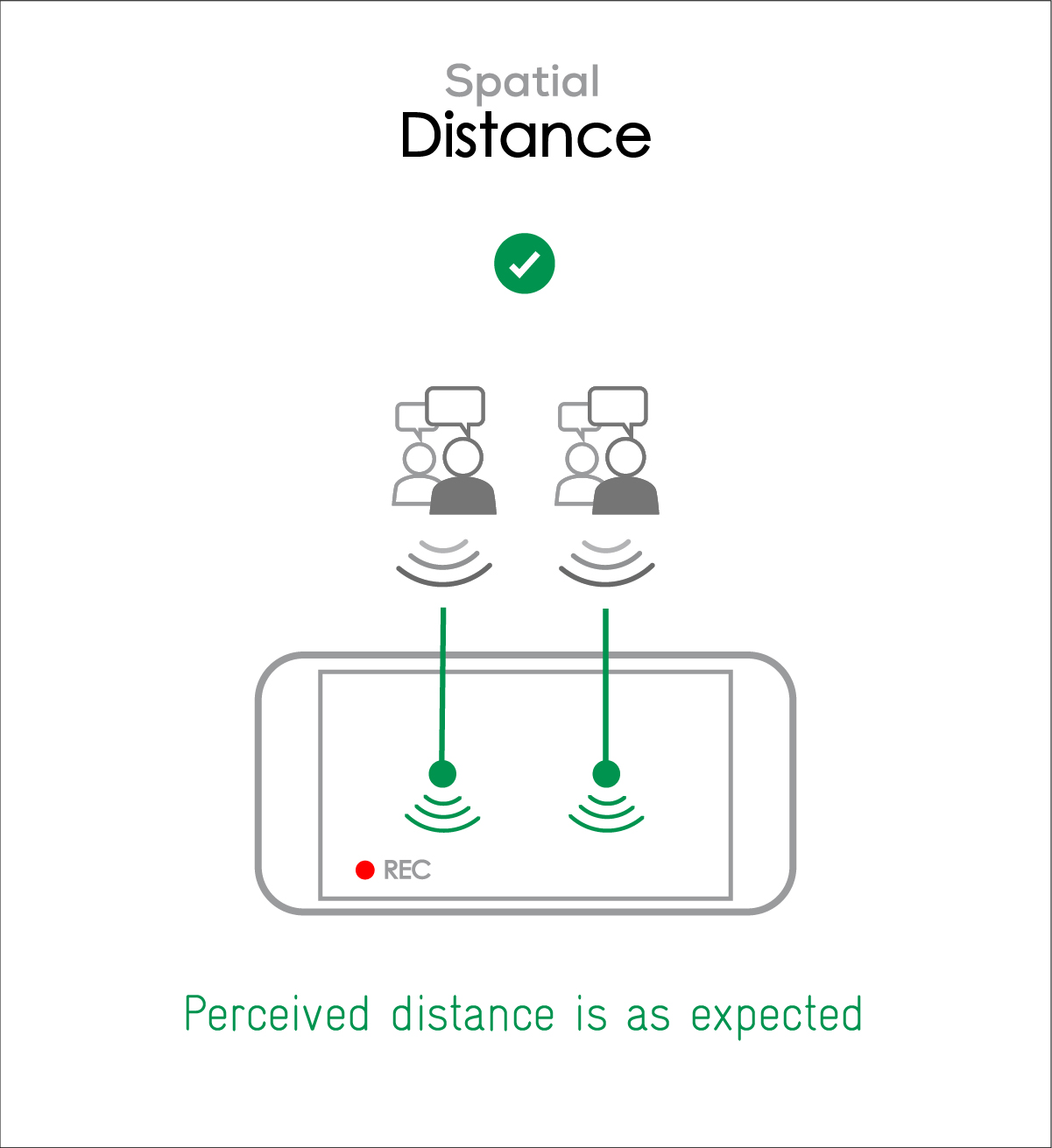
While wideness is certainly great when recording videos with the rear camera, it is particularly poor in selfie videos, despite the implementation of the Directivity audio zoom algorithm that attenuates voices on the side of the recorded audio scene in favor of the meaningful sound sources.
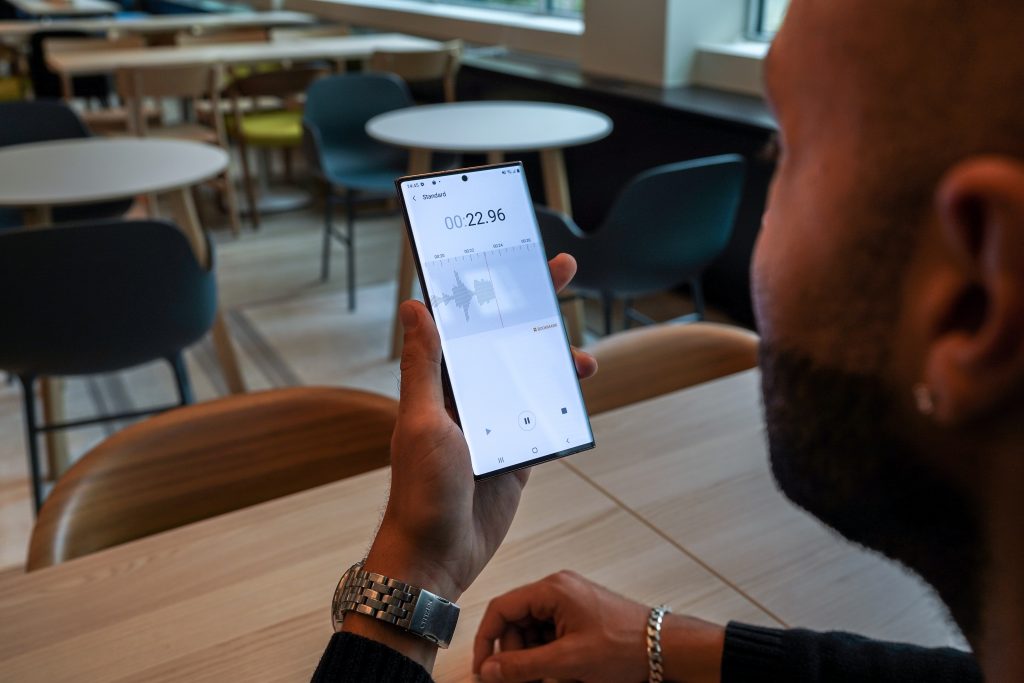
Unfortunately, the memo app records only in mono, which of course severely affects the overall spatial score by substantially impairing wideness and localizability.

Volume
Samsung Galaxy Note20 Ultra 5G (Exynos)
70
99
Although nominal loudness is a little lacking when filming videos with the rear camera, it is particularly good in selfie videos and when recording a memo. Maximum acceptable recording level is also very good.
Here are our test results, measured in LUFS (Loudness Unit Full Scale). As a reference, we expect loudness levels to be above -24 LUFS for recorded content:
| Meeting | Life Video | Selfie Video | Memo |
| -25.9 LUFS | -23.4 LUFS | -22.2 LUFS | -22.3 LUFS |

Artifacts
Samsung Galaxy Note20 Ultra 5G (Exynos)
73
97
Certainly not as stellar as its artifacts performance for Playback, the Galaxy Note20 Ultra’s recording artifacts sub-score still manages to stay well above average. Memos and selfie videos are impaired by neither temporal nor spectral artifacts; videos recorded with the rear camera suffer from only rather discreet audible artifacts; and we perceived no noticeable compression in our meeting room scenario.
However, when recording in loud environments (typically, our electronic concert use case), slight hissing and pumping effects occur. Distortion as well as heavy compression are also perceivable on shouting voices. You can hear some of those artifacts for yourself in this sample recording:
Finally, while hand occlusions are efficiently handled overall, they can occasionally induce slight timbre and balance alterations. Fiddling around the microphone triggers pumping and particularly loud noises.

Background
Samsung Galaxy Note20 Ultra 5G (Exynos)
33
60
The background sub-score is heavily affected by the fact that the Memo app doesn’t record in stereo. Furthermore, the minor lack of bass makes the background sound slightly unnatural, especially when filming selfie videos. Apart from that, the background recordings are rather good, with decent overall tonal balance and an above-average sub-score for undesirable sound artifacts.
Conclusion
In the audio area, the latest and most expensive Ultra in the Samsung Galaxy line doesn’t quite eclipse its strongest competitors. Nevertheless, it delivers a top-tier performance, with an exemplary ability to control undesirable speaker artifacts, good overall playback dynamics and volume, and rather faithful timbre reproduction when recording audio. However, the balance is shifted to the right when playing back audio in landscape mode; and tonal balance, spatial, and dynamics are all affected by a lack of high- and low-end extension. And once again, Samsung insists on having its memo app record in mono.
As with the S20 Ultra, despite the extravagant description of the Galaxy Note20 Ultra 5G’s attributes, we can safely assume that despite its above-average performance, audio quality wasn’t Samsung’s top priority when designing its latest flagship phablet.
Playback
Pros
- Above-average dynamics performance
- Above-average volume performance
- Great artifacts performance
Cons
- Lack of high-end extension affects tonal balance and spatial performance.
- Balance is shifted to the bottom right.
Recording
Pros
- Good timbre performance.
- Great loudness in selfie videos and in the memo app.
Cons
- Mono recording of the memo app impairs wideness and localizability.
- Tonal balance is impaired by the lack of low-end extension, especially in portrait mode.



DXOMARK encourages its readers to share comments on the articles. To read or post comments, Disqus cookies are required. Change your Cookies Preferences and read more about our Comment Policy.